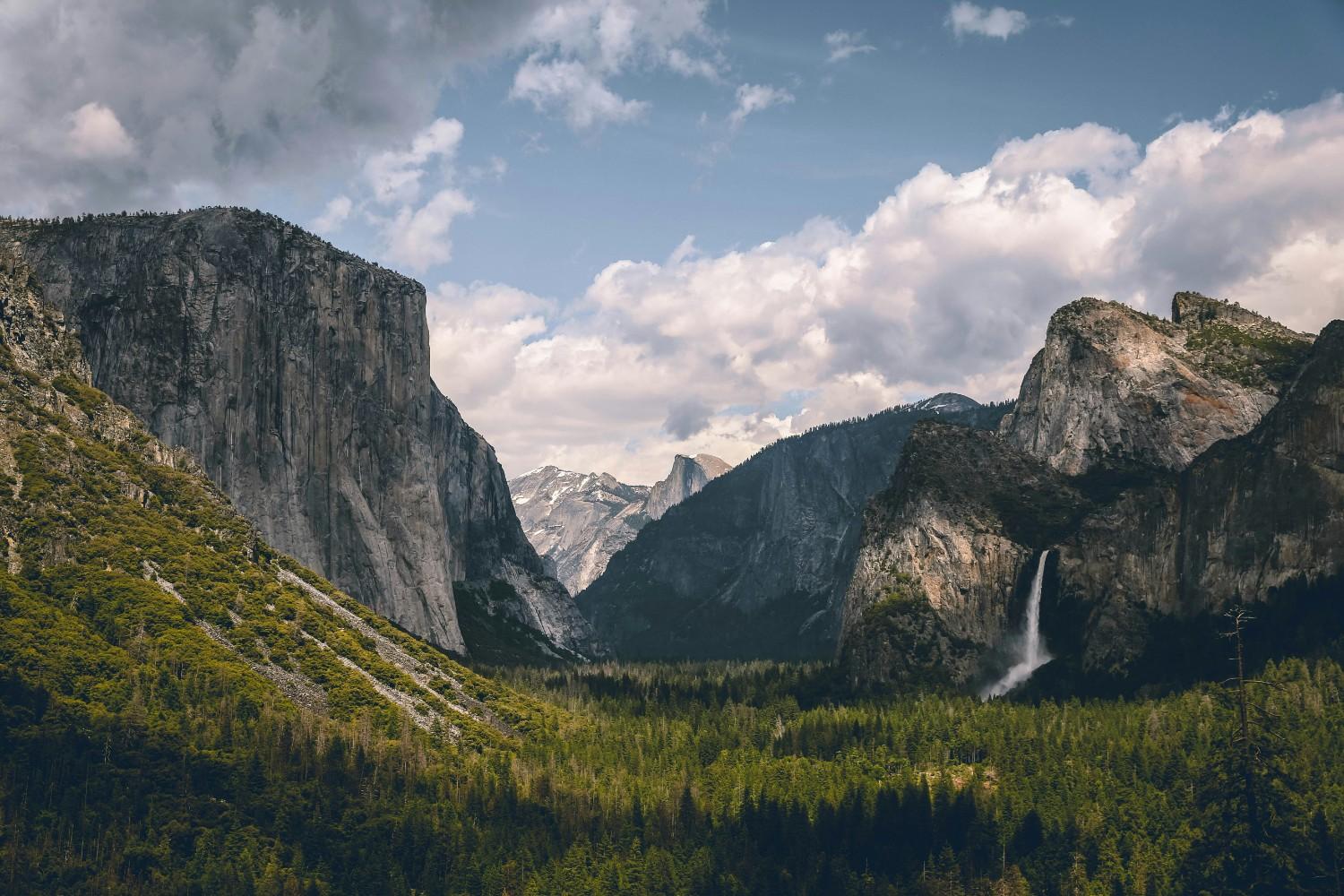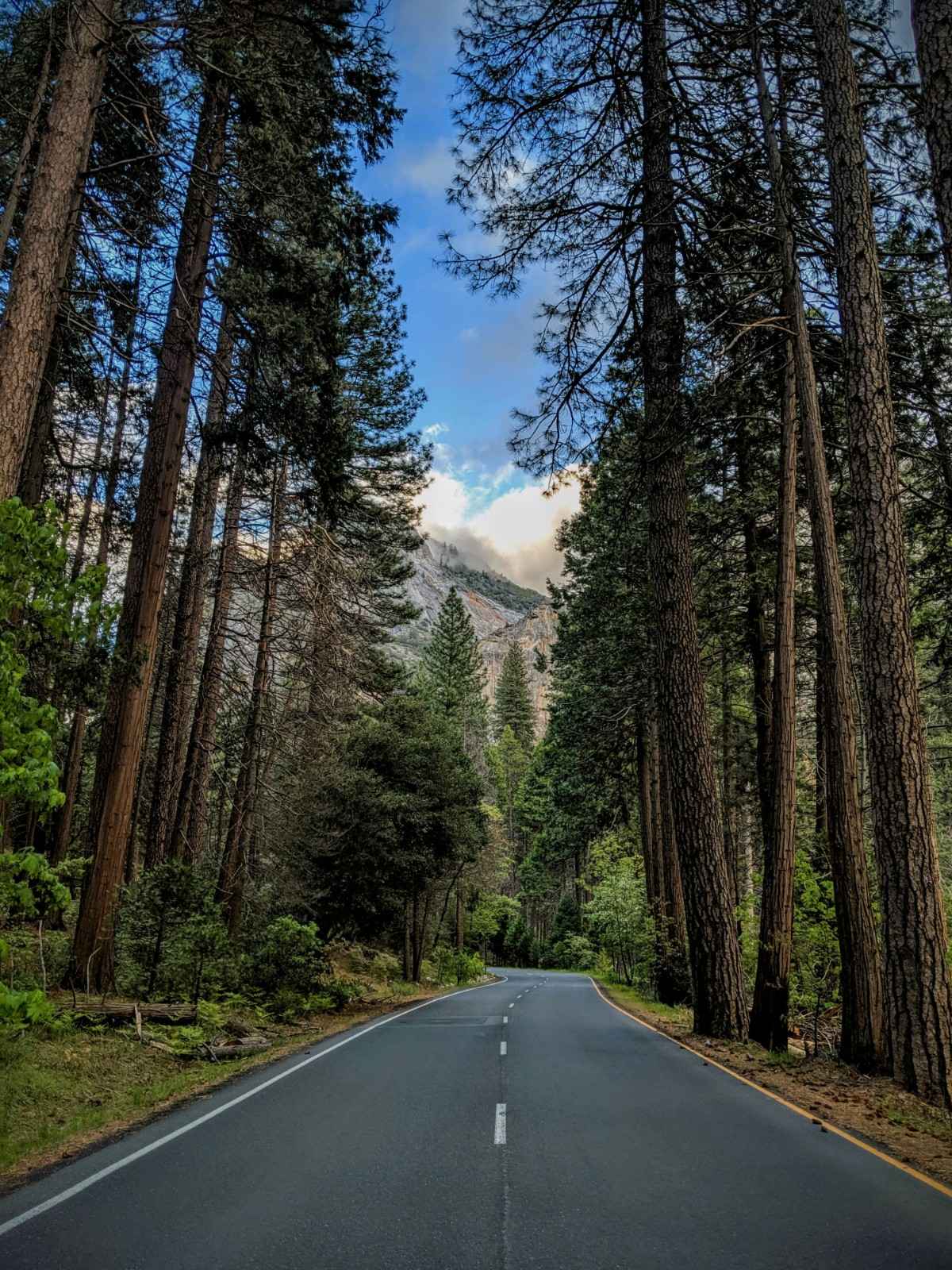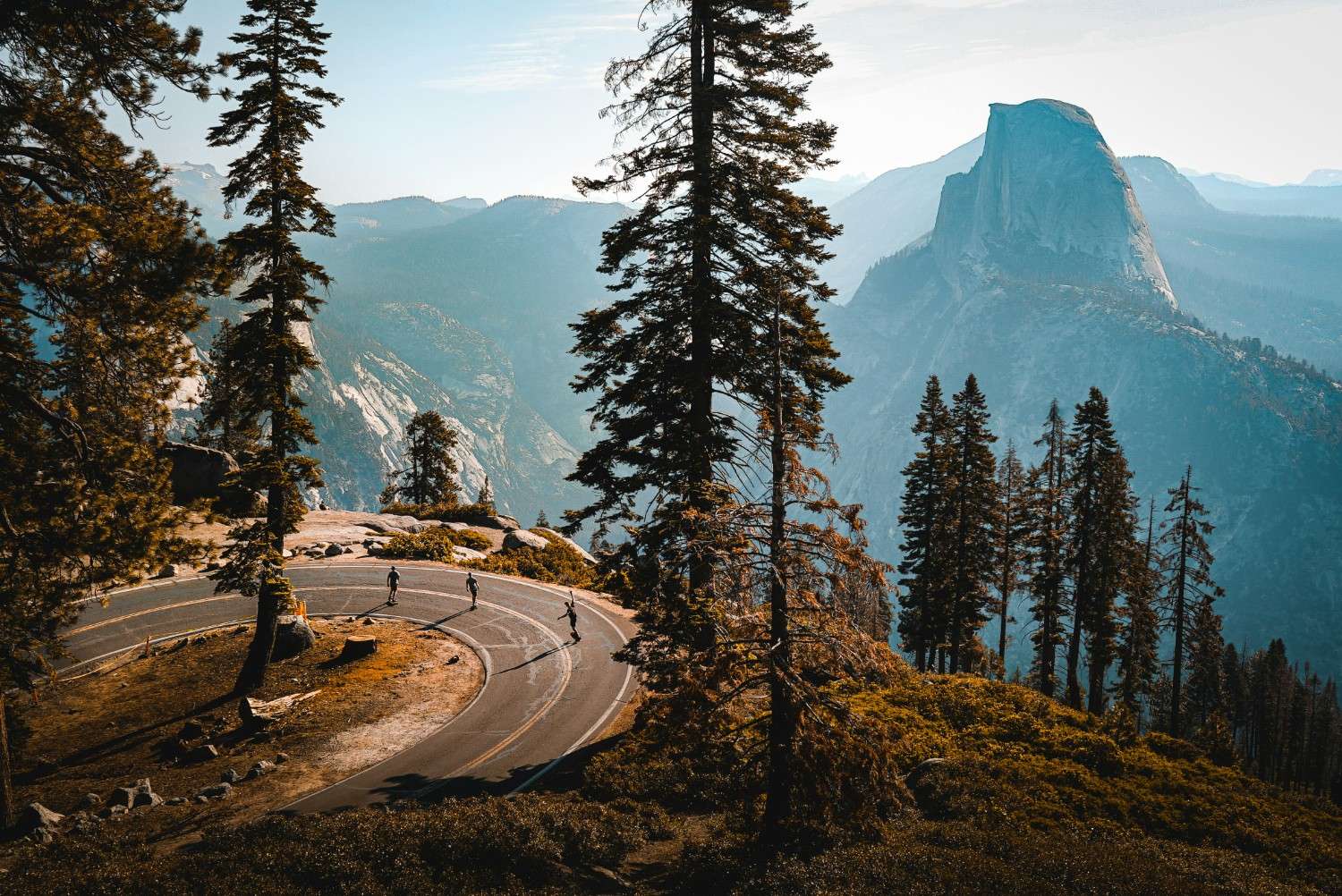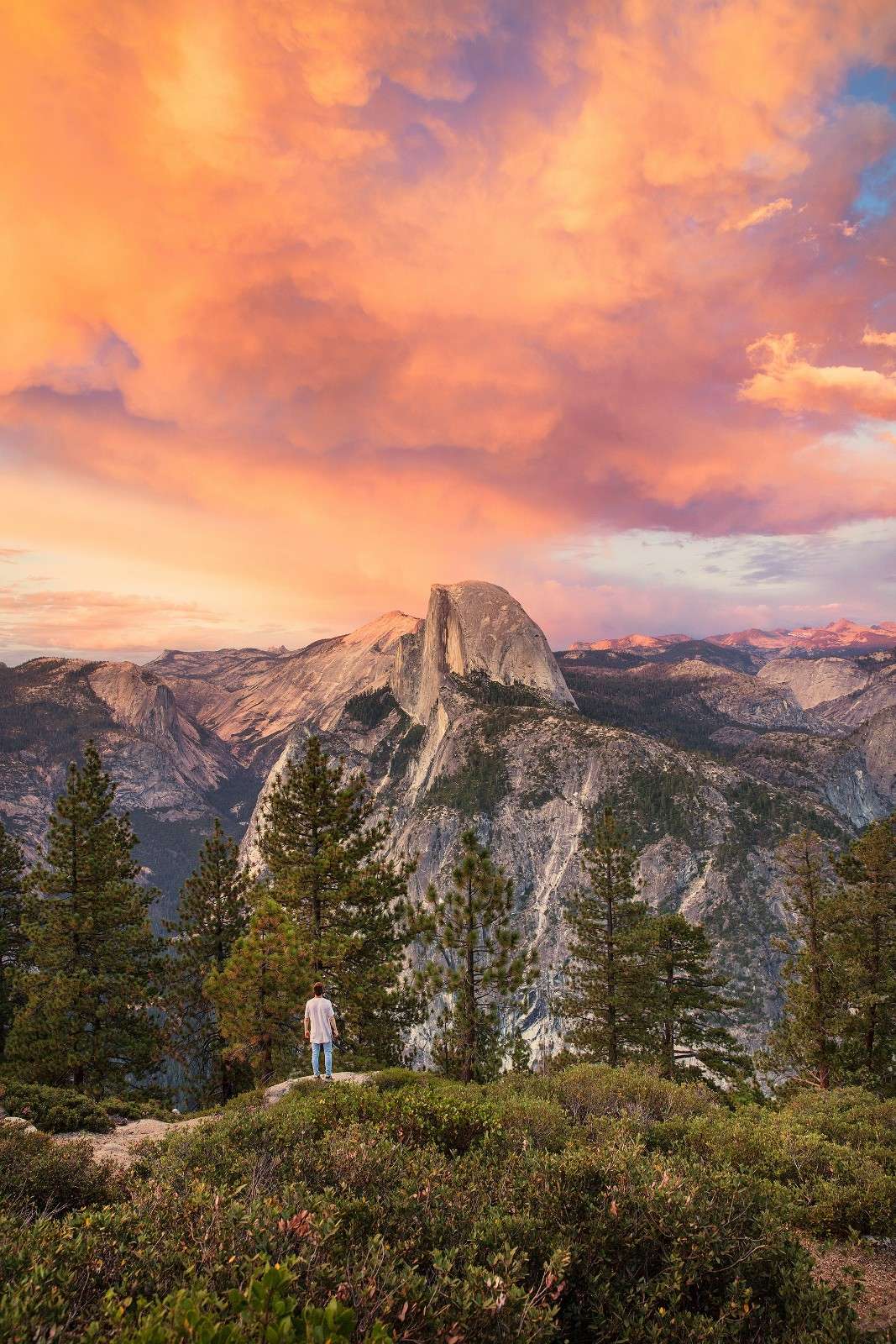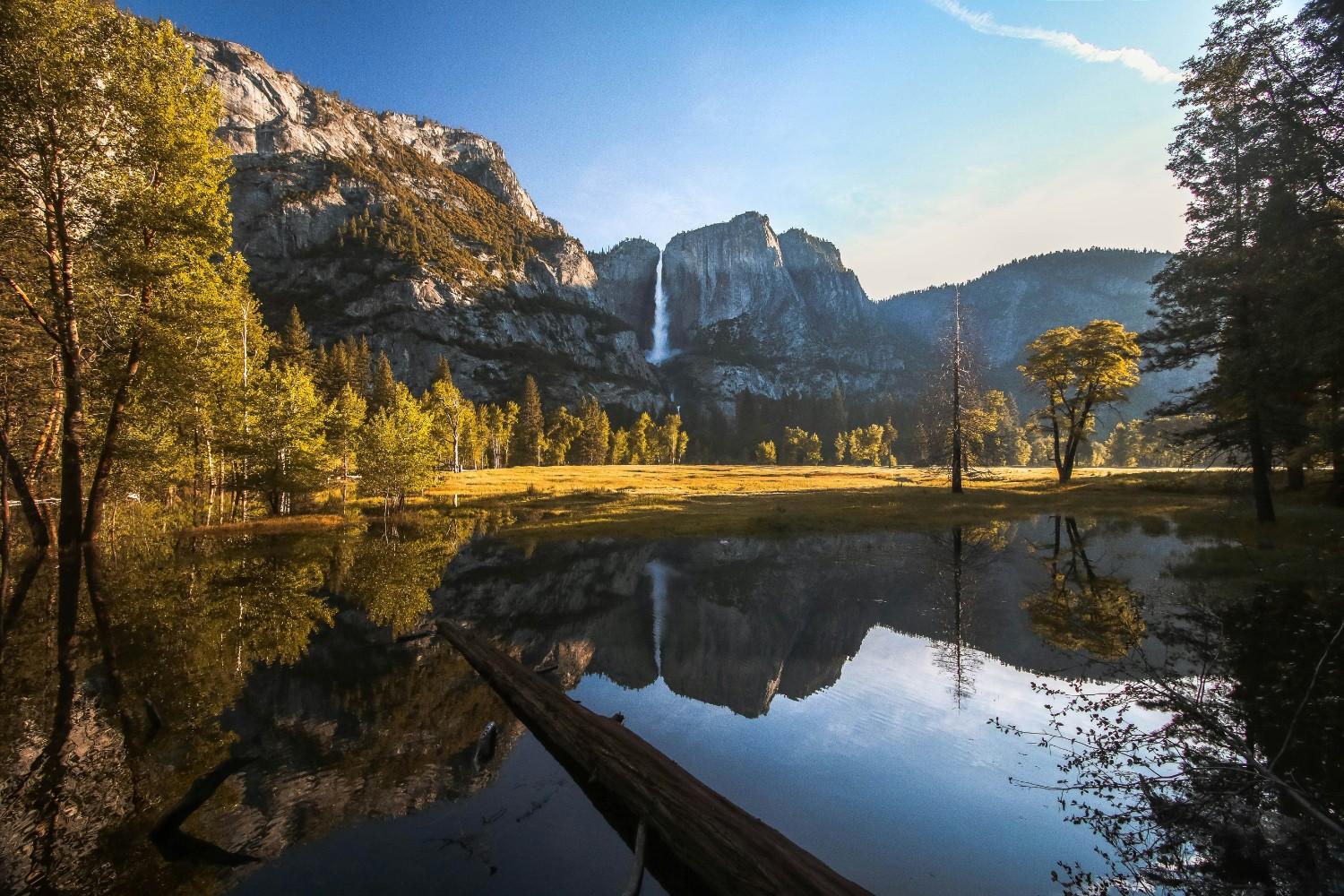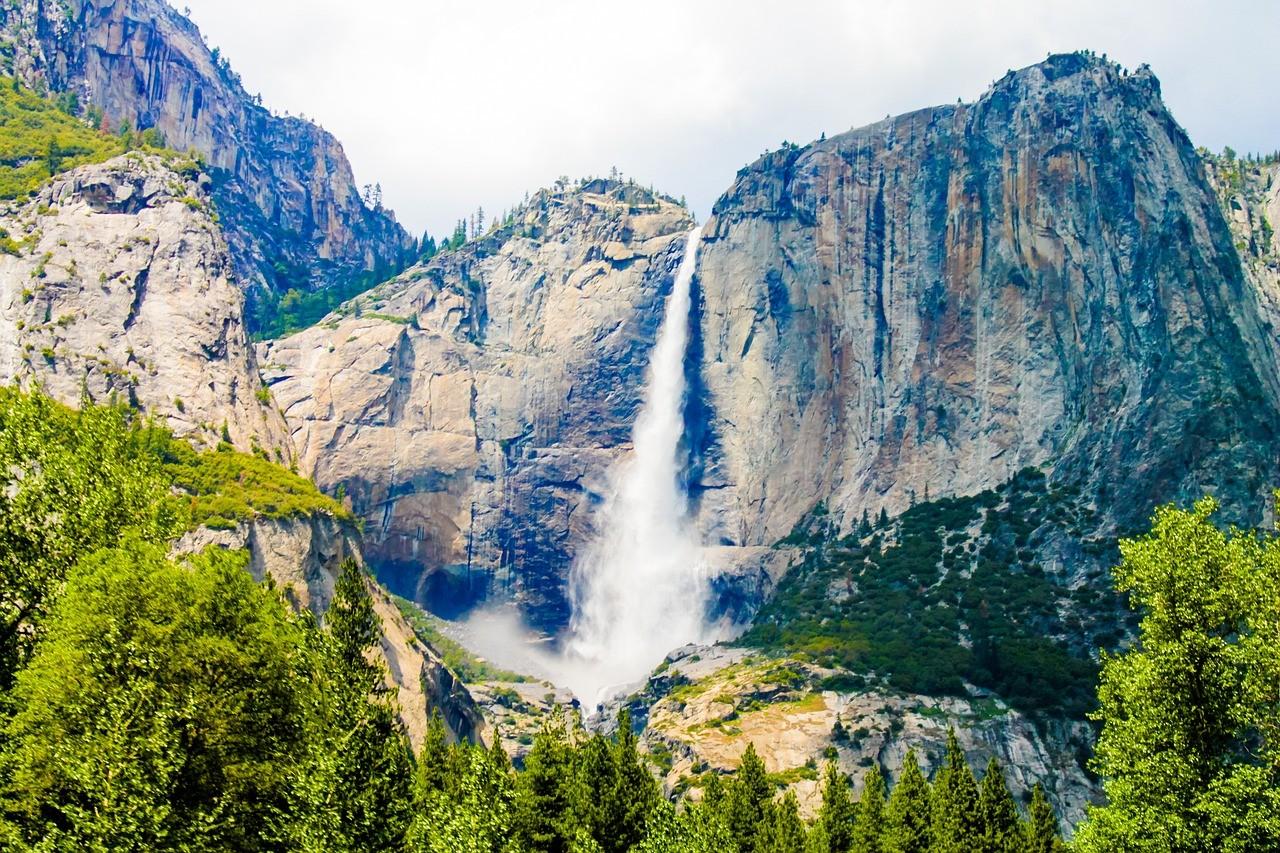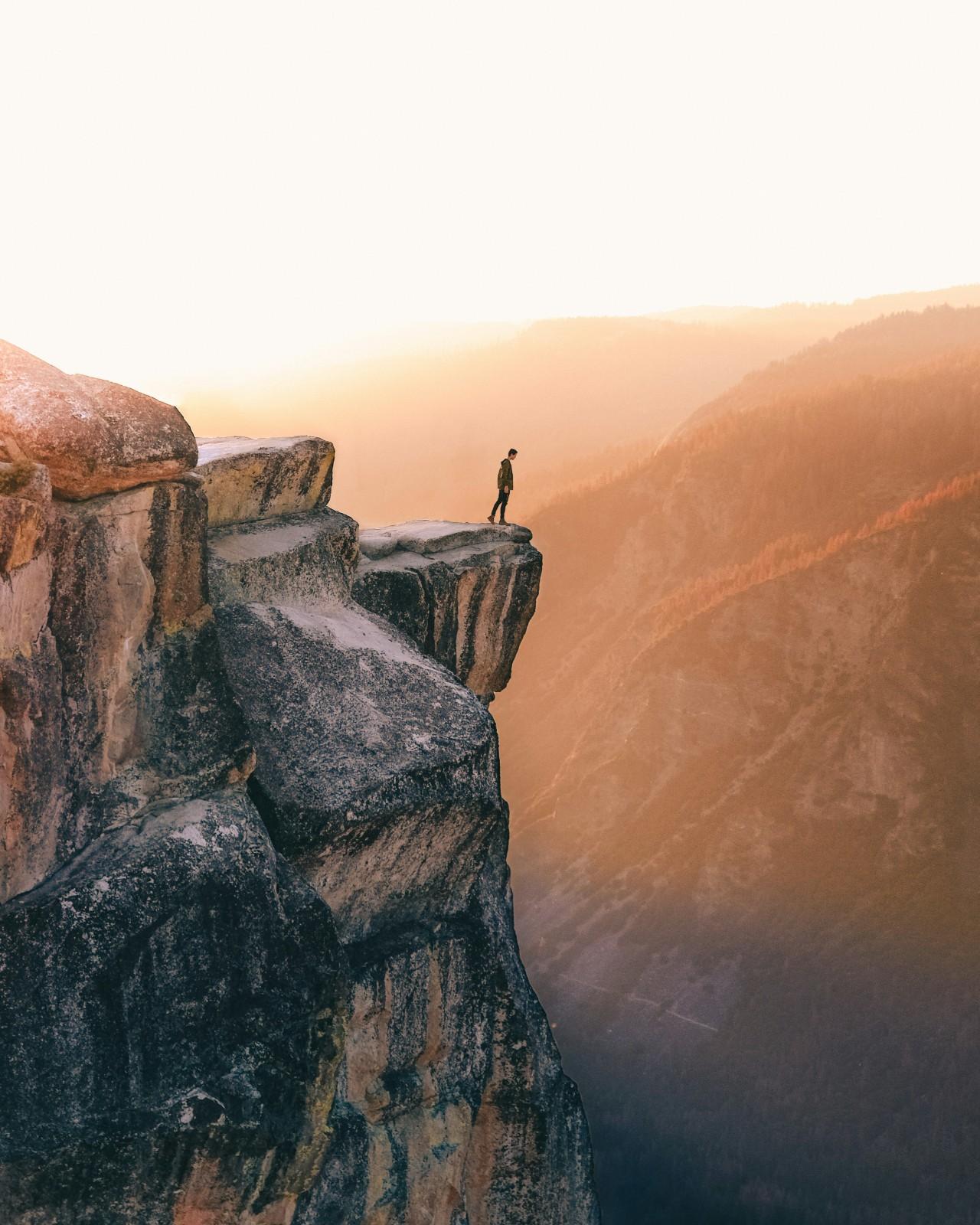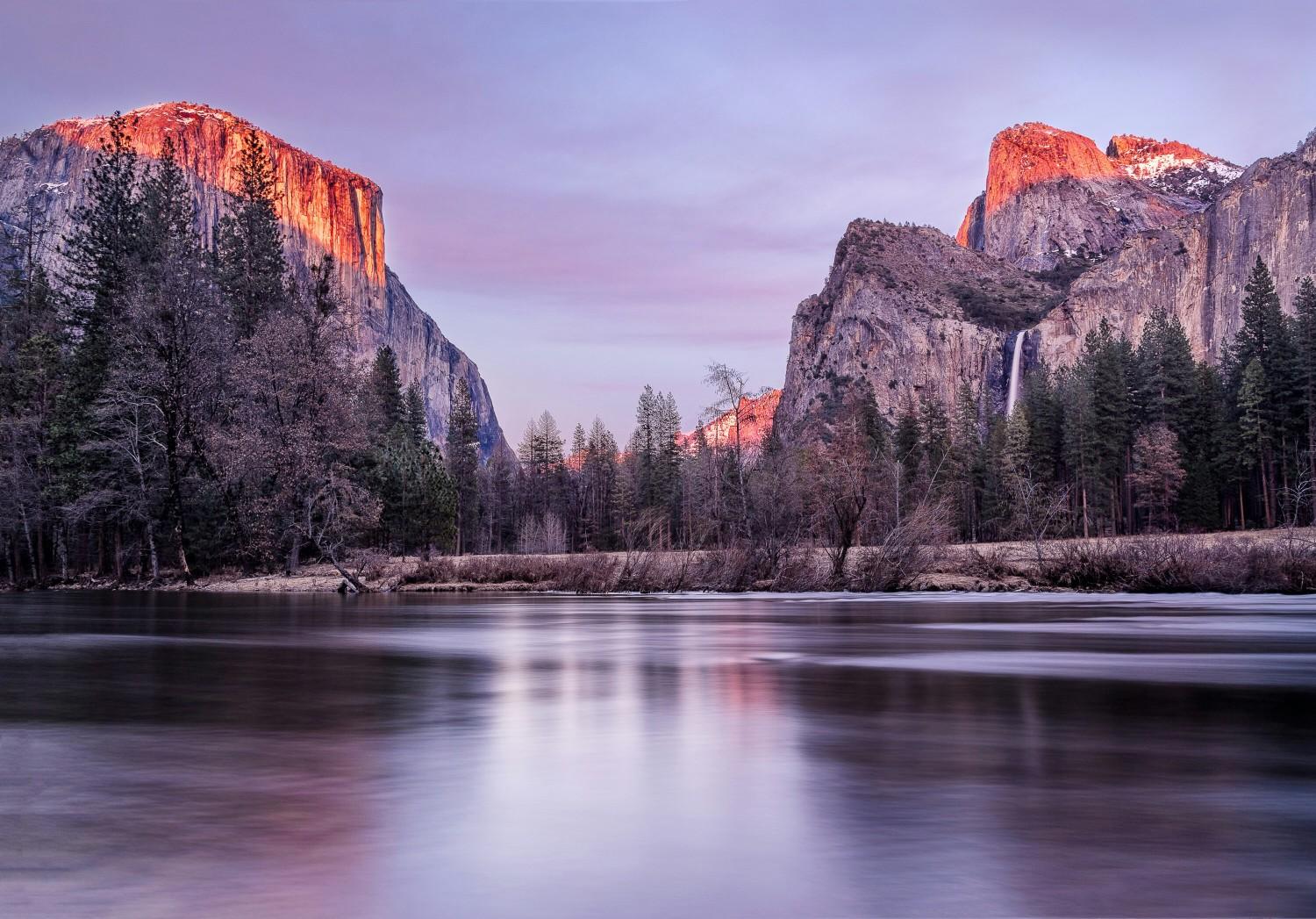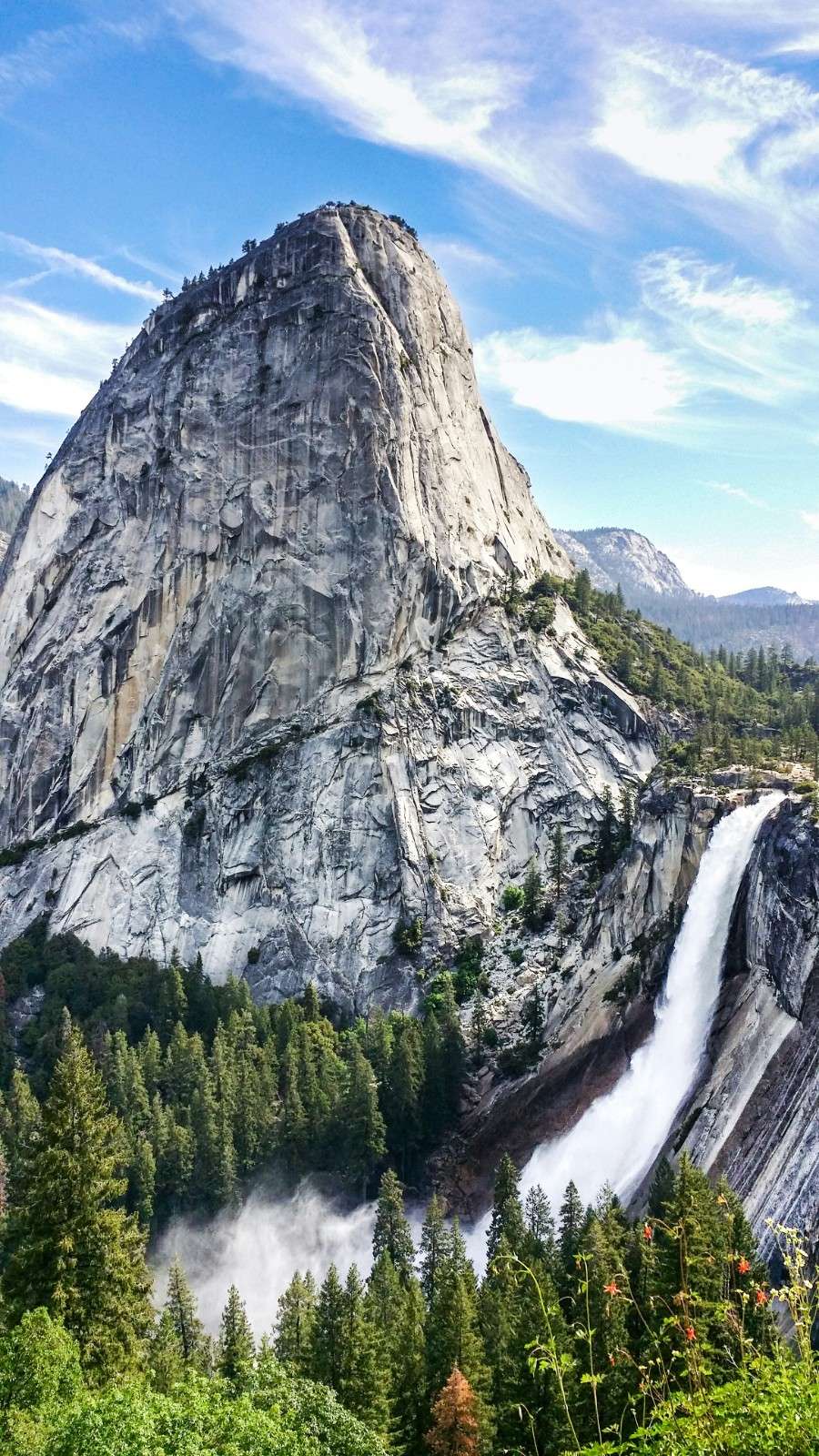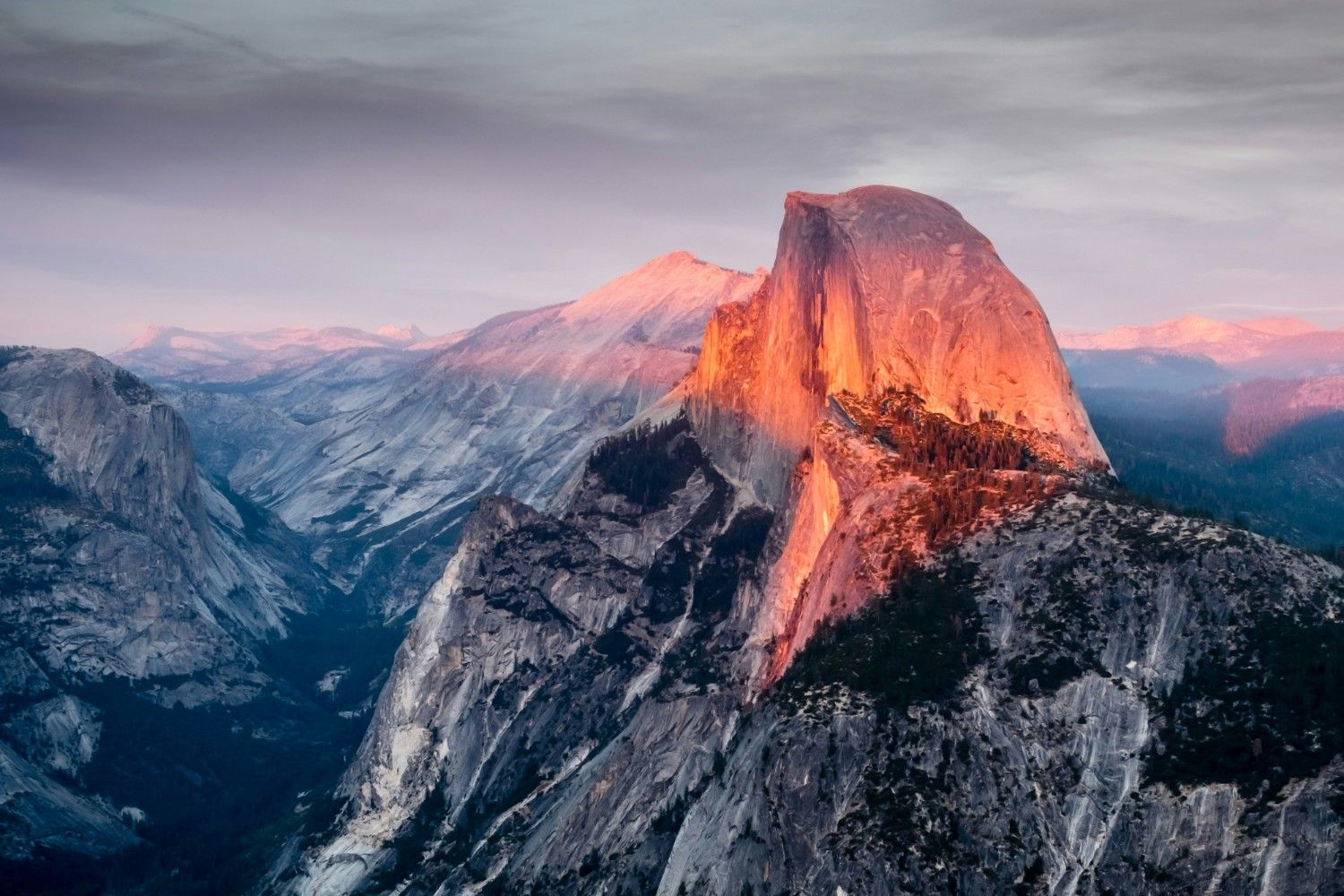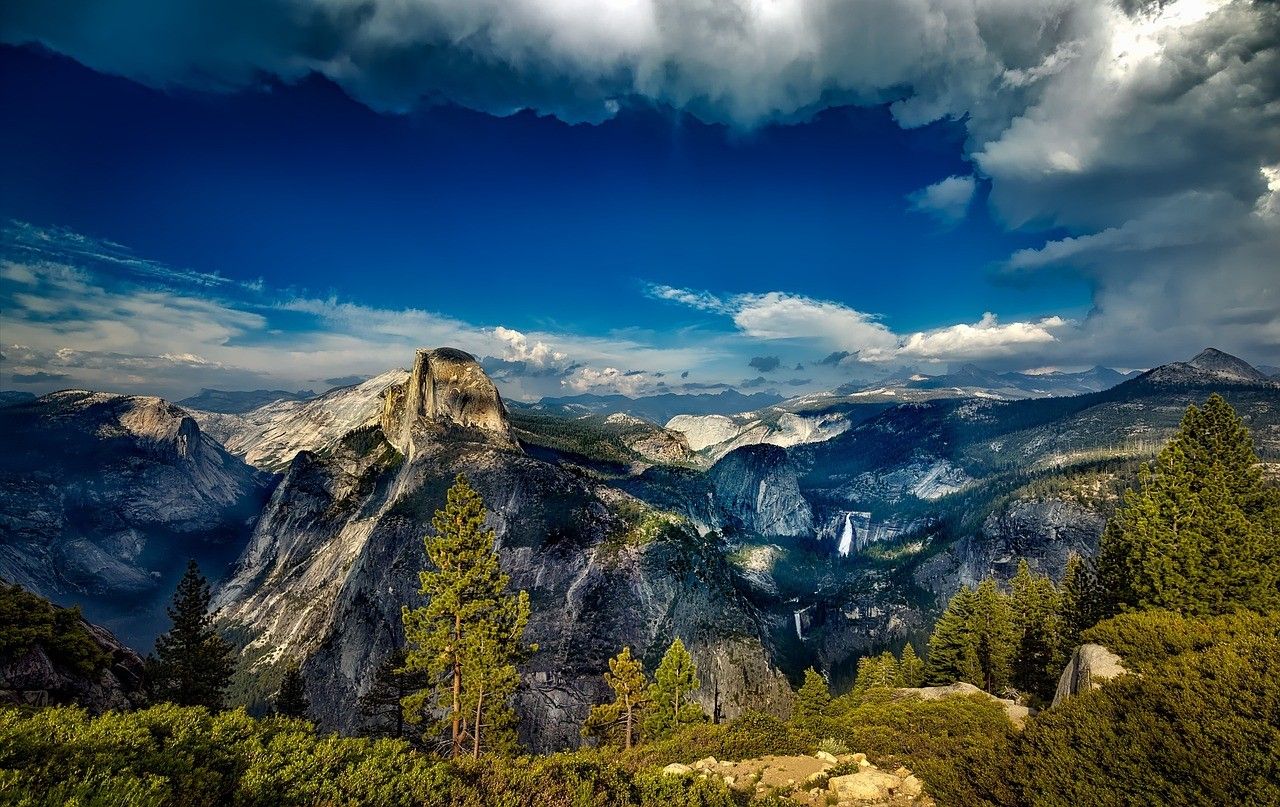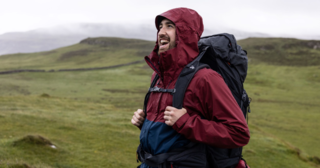An Introduction to the Yosemite
Yosemite National Park is located in central California's Sierra Nevada mountain range. Known around the world for its granite cliffs, giant sequoia trees, thundering waterfalls and vast wilderness, Yosemite welcomes over 4 million visitors per year.
Location and Geography
Sat central in California's Sierra Nevada mountain range, Yosemite National Park covers nearly 1,200 square miles of wilderness in the centre of the state. The nearest cities are Fresno, Sacramento and San Francisco. The park can be accessed via several highways and roads including Highways 41, 120, 140 and Tioga Pass Road. Yosemite is surrounded by several national forests and wilderness areas. The park ranges in elevation from 2,000 feet to 13,114 feet at the summit of Mount Lyell, with an average elevation around 4,000 feet.
Notable Natural Landmarks
Yosemite is world-renowned for its impressive natural landmarks and unique geology. Iconic granite cliffs like El Capitan and Half Dome rise over 3,000 feet above glacially-carved valleys dotted with meadows and lakes. Ribbon-like waterfalls including the tallest in North America - Yosemite Falls, plunge over the valley's rim. Giant sequoia trees, some of the largest trees on earth, grow in Mariposa Grove and elsewhere in the park. Along with these landmarks, Yosemite contains a vast wilderness with pristine lakes, rivers and alpine terrain.
History and Formation of Yosemite
Yosemite National Park has a long history of human habitation and a fascinating natural history and geologic story. The park was inhabited by Native American tribes for thousands of years before Europeans first entered the area in the mid-1800s. Yosemite was made a public land grant in 1864, then designated a national park in 1890, one of the first in the United States.
Native Americans in Yosemite
Native American tribes including the Ahwahneechee, Mono and Paiute inhabited the Yosemite area for over 3,000 years. These tribes subsisted on acorns, fish and game in the rich Yosemite ecosystem. They referred to themselves as the Ahwahneechee, meaning "people of the Ahwahnee" after their name for the valley - Ahwahnee, meaning "place like a gaping mouth". European diseases and clashes displaced the natives over time. Descendants still live in communities near Yosemite today.
Early Exploration and Protection
Though Spanish missionaries likely entered the outer Yosemite area in the early 1800s, the first non-natives confirmed in the valley were members of the Mariposa Battalion in 1851 while pursuing natives during conflicts in the area. News and sketches of the magnificent valley soon spread back east. Early conservationists like Galen Clark and Senator John Conness pushed for protection of the land. Yosemite Valley and Mariposa Grove were designated as a public land grant by President Lincoln in 1864. Conservationist John Muir lobbied for further protections - in 1890, Congress set aside over 1,500 square miles as Yosemite National Park for preservation and public enjoyment.
Geologic Processes Behind Yosemite's Formation
Yosemite's formations date back over 230 million years ago when sediments were deposited across the region under an ancient ocean. Upheavals later created the ancestral Sierra Nevada mountain range. Massive granite intrusions cooled to form the distinctive light grey granite found throughout the park including at El Capitan and Half Dome. Glaciers during recent ice ages sculpted and carved the sharp granite ridges and valleys over long periods of time. Uplift continues to elevate the region, further accentuating scenic features. These ongoing processes created the exceptional combination of vertical relief and cleanly sculpted forms found in Yosemite.
Iconic Locations In Yosemite
From thundering waterfalls to sky-scraping granite domes, Yosemite National Park is filled with natural beauty and iconic locations that visitors have flocked to for over a century. While Ansel Adams' famed black-and-white images helped make locations like Half Dome global icons, experiencing them in person fully reveals their power and grandeur.
Yosemite Valley
Yosemite Valley is the heart of the park for most visitors. Flanked by Half Dome and El Capitan, the U-shaped glacial valley features verdant meadows, the Merced River, scenic vistas and waterfalls around every turn. Popular activities include short walks to Lower Yosemite Fall and Bridalveil Fall or soaking in classic views of Half Dome from Valley View and Tunnel View. Visitors looking to stay overnight can camp in the valley or bunk at the famous Majestic Yosemite Hotel (formerly Ahwahnee Hotel).
Tuolumne Meadows and the High Sierra
The Tioga Pass Road traverses the park and climbs through forests and granite domes until reaching Tuolumne Meadows at 8,600 feet elevation along the Dana Fork of the Tuolumne River. The largest subalpine meadow in the Sierra Nevada, Tuolumne Meadows delights visitors with wildflowers, granite domes, peaks, lakes and trails into the Yosemite high country and John Muir Wilderness Area. Hikers use Tuolumne as a starting point for challenging routes up Half Dome and Cathedral Peak or relaxing walks to Soda Springs and Lembert Dome.
Mariposa Grove and the Giant Sequoias
Home to over 500 mature giant sequoia trees, Mariposa Grove protects one of Yosemite's natural wonders - ancient and colossal trees that can grow over 300 feet tall. Located near Yosemite's south entrance, visitors walk through the Merced and Grizzly Giant groves on well-developed trails showcasing specimen trees like the Bachelor and Three Graces as well as the 2,000 year old Grizzly Giant. Shuttle buses help visitors access areas of the grove. Overnight visitors can bunk at the rustic Wawona Hotel near the grove entrance.
Best Activities In Yosemite National Park
With nearly 95% of Yosemite designated wilderness, the park offers boundless opportunities for adventure, recreation and exploration. Favourite summertime activities include admiring waterfalls, challenging one's courage on a High Sierra hike and finding tranquillity amidst lush meadows and forests. Wintertime offers a vastly different and less crowded but equally inspiring experience in a snow-covered landscape.
Hiking and Backpacking
With over 800 miles of hiking trails, Yosemite boasts limitless hiking options for all ability levels. In Yosemite Valley, short walks give easy access to the park's scenic waterfalls and tunnel vistas. Hit classic High Country routes out of Tuolumne Meadows to Poly Dome Lake and Elizabeth Lake. Challenge yourself on the iconic Half Dome trail via the Mist Trail and John Muir Trail or multi-day backpacking routes to the general high country wilderness. Always carry the 10 Wilderness Essentials when you head out and get required permits if staying overnight.
Climbing
As the birthplace of American rock climbing, Yosemite remains a premier destination for climbers seeking challenges like "The Nose" route up the towering El Capitan granite monolith soaring 3,569 feet above Yosemite Valley. For beginners, take an intro climbing course or hire guides to lead you up classics like the Northwest Face of Half Dome. Outfitters in the Valley offer gear, lessons and services for climbers at all levels. Respect climbing closures in effect to protect sensitive wildlife like nesting peregrine falcons in summer.
Winter Activities
Yosemite Valley offers ice skating, cross-country skiing and snowshoeing trails in winter amid stunning snow-draped scenery. Head up Glacier Point Road for downhill skiing and snowboarding at the small Badger Pass ski area. Join park ranger-guided programs like Family Snow Walks, Ski Hut Trips or Full Moon Snowshoe Tours for unique experiences. Wawona and the southern park has more mild winters for horse-drawn rides or golf at the historic Wawona Golf course surrounded by sequoias.
When to Visit Yosemite National Park
Yosemite National Park offers spectacular scenery all year round. Springtime's rushing waterfalls and wildflower meadows give way to adventuresome summer days. Crisp and colourful autumns follow before the park settles into a stunning frost-dusted winter wonderland. Each season offers its own charms and memorable opportunities to experience this natural wonderland.
Spring in Yosemite (March to May)
As heavy snows start melting in spring, thundering waterfalls like Yosemite and Bridalveil Falls awaken and reach their peak flows. Lodging openings mid-March signal the transition into springtime when afternoon temperatures rise to 50-70F. Wildflowers start awakening vibrant mountain meadows in May as access roads like Tioga reopen in late spring. Visitor levels remain low, though increase towards Memorial Day weekend. Prime springtime scenics include roaring waterfalls, reflection-filled lakes and colourful blooming meadows.
Summer in Yosemite (June to September)
The busy summer months see Yosemite National Park bustling with visitors exploring the trails, lakes and scenics only accessible once seasonal access roads and high country passes have cleared of snowdrifts. Afternoon high temps range 70-90F. Visitor services like campgrounds, tours and activity rentals run full operations. Hotel rates peak during these busy months when reservations are essential. Popular summer activities include swimming at riverside beaches, challenging Half Dome hikes pre-noon, moonbow sightings under summer full moons at Lower Yosemite Falls and outdoor theatre and music events.
Autumn in Yosemite (September to November)
Yosemite sees a colourful display of black oaks, big leaf maples and dogwood trees showcasing brilliant yellows, oranges and reds throughout the valleys and foothills starting in September and peaking in October. Crowds and temps diminish, enhancing visitor experience. Though access roads start closing in October, savour autumn's relaxed pace via a Tioga Pass fall foliage road trip, photographing golden trees reflecting on mirror-still lakes or basking in sunny midday temps still hovering in the 60s through October. Wintry storms begin dusting peaks in November as chillier days encourage warming up by a fire or in the hot pools at Chilnualna Falls.
Winter in Yosemite (December to February)
Frigid nights lead to sparkling days in Yosemite as frosty blankets of white transform Yosemite into a true winter wonderland. Access beyond the valleys requires tire chains and 4 wheel drive vehicles to navigate snow-covered roads though park shuttlebuses still operate in Yosemite Valley/Glacier Point areas. Winter highlights include peaceful snowshoeing, cross-country skiing, museum visits or simply appreciating a hot drink while admiring icicle-adorned forest scenes or frozen waterfalls. Though busy around the winter holidays, Yosemite mellows in January/February with lift-serviced downhill skiing/snowboarding at Badger Pass being a top winter pastime.
Where to Stay in Yosemite National Park
Yosemite National Park offers diverse accommodation options for visitors ranging from simple tent cabins to luxury hotels. Lodging reservations far in advance are essential, especially for summer stays. Over 1,300 campsites across 13 campgrounds provide the most budget options in beautiful (though basic) wilderness settings. More comfort-focused lodgings run by Aramark are dotted throughout the park for visitors seeking resort-style amenities and service.
Yosemite Campgrounds 101
Camping presents the most affordable and abundant places to stay across Yosemite. The Pines, Upper Pines and North Pines campgrounds in Yosemite Valley put you steps away from trailheads. Tuolumne Meadows Lodge and tent cabins in Tuolumne Meadows provide prime high country access in summer. Wawona's riverfront campground works well for Mariposa Grove visitors while Crane Flat and Hodgdon Meadow lie conveniently off the Big Oak Flat entrance. Fully outfitted tent cabins at Half Dome Village provide mattresses, warmth and lighting - a step above basic tent camping. Reserve well in advance at Recreation.gov or take your chances at first-come, first-served sites.
Lodges and Historic Hotels
For visitors desiring comfortable beds, hot showers, restaurants and prime park access without camping hassle, Yosemite's collection of lodges and hotels by Aramark hit the spot. The Majestic Yosemite Hotel (formerly Ahwahnee) at Yosemite Valley is the park's luxury option with classic elegance and superb dining. Yosemite Valley Lodge and Half Dome Village feature well-appointed rooms, swimming pools and dining options minutes from trailheads. Big Trees Lodge at Wawona and Tuolumne Meadows Lodge capture the park's historic spirit with cozy tent cabins and mountain hospitality to retire to after high country adventures.
Getting to Yosemite National Park
Reaching Yosemite National Park involves flying into Fresno Yosemite International Airport or Sacramento International Airport then driving into the park via the various access roads. Year-round access is available along Highway 41 from Fresno, Highway 140 from Merced and Highway 120 West from Sonora into Yosemite Valley. Summer-only access extends over the scenic Tioga Pass (Highway 120 East) from Lee Vining near Mono Lake. Vehicle entry reservations are required during peak visitation. Public transportation by bus and train is also available seasonally.
Driving to Yosemite
Most visitors reach Yosemite National Park by car. The park is approx. 3-4 hours from both San Francisco and Los Angeles. Highway 41 from Fresno is the closest and most popular route, entering the park near its southernmost point near Wawona and Mariposa Grove. Highway 140 from Merced enters through El Portal near the Arch Rock entrance on the western side while Highway 120 West crosses through Groveland, offering views over the Grand Canyon of the Tuolumne on the way towards Crane Flat and Big Oak Flat. The scenic summer-only Tioga Pass route along Highway 120 East starts near Mono Lake, traversing high country until dropping into Tuolumne Meadows and linking to Yosemite Valley.
Flying + Public Transport to Yosemite
Visitors flying into airports at Fresno, Sacramento, San Francisco or Reno/Tahoe rely on car rentals or buses continuing onward to the park. Public transport options include year-round daily Amtrak bus + YARTS bus combo trips from the Bay Area with pickups in Merced heading towards Yosemite Valley. The seasonal (roughly June to September) YARTS Highway 120 East route services visitors from stops near Mono Lake before crossing stunning Tioga Pass to arrive at Tuolumne Meadows and beyond down towards the Valley. Parking reservations are also required August to September.
Essential Planning Tips
Proper planning enhances travel within massive Yosemite National Park and helps you make the most of your visit while avoiding common hassles around limited parking spaces, lodging availability, and more. Use the park's digital resources then review key tips around reservations, avoiding crowds, wildlife safety, food storage, packing lists and more when planning your adventures to this superlative natural area.
Plan Your Travel in Advance
Start planning early by exploring digital tools like the NPS Yosemite Guide app and Excite@Yosemite online trip planning assistant to build your custom itinerary matched to current conditions. The earlier you book lodging, the better - rooms often sell out 6-12+ months in advance for peak summer season. Also consider booking activities like photography walks, bike rentals or climbing lessons ahead of time to secure your top choices. Don't forget acquiring park entry reservations and applicable wilderness permits for overnight hikes during the quota season.
Insider Tips for Avoiding Crowds
As one of America's most popular parks, Yosemite crowds are unavoidable during summer though smart planning provides respite through other seasons and lesser-visited parts of the park. Autumn's thinning crowds make October a delight while wintertime sees most visitors cleared out until holiday weeks. Avoid Yosemite Valley by exploring Hetch Hetchy, Mariposa Grove or the Clark Range for rare solitude. Finally, sunrise and sunset periods provide peace amidst iconic locales without the big midday mobs at spots like Valley View or Tunnel View. Putting in some extra effort winds up enhancing your overall experience.
Related Articles

Let us know you agree to cookies
We use marketing, analytical and functional cookies as well as similar technologies to give you the best experience. Third parties, including social media platforms, often place tracking cookies on our site to show you personalised adverts outside of our website.
We store your cookie preferences for two years and you can edit your preferences via ‘manage cookies’ or through the cookie policy at the bottom of every page. For more information, please see our cookie policy.
